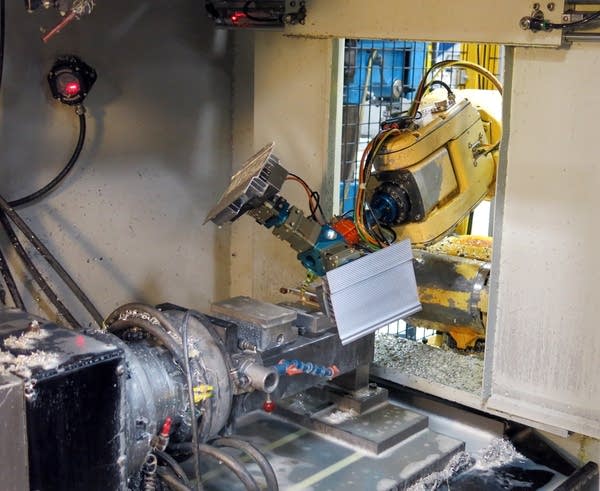Robots help fill gaps in Minnesota's workforce

A robot loaded a part into a milling machine at Alexandria Industries in Alexandria, Minn., on April 9, 2015.
Dan Gunderson | MPR News
Go Deeper.
Create an account or log in to save stories.
Like this?
Thanks for liking this story! We have added it to a list of your favorite stories.


